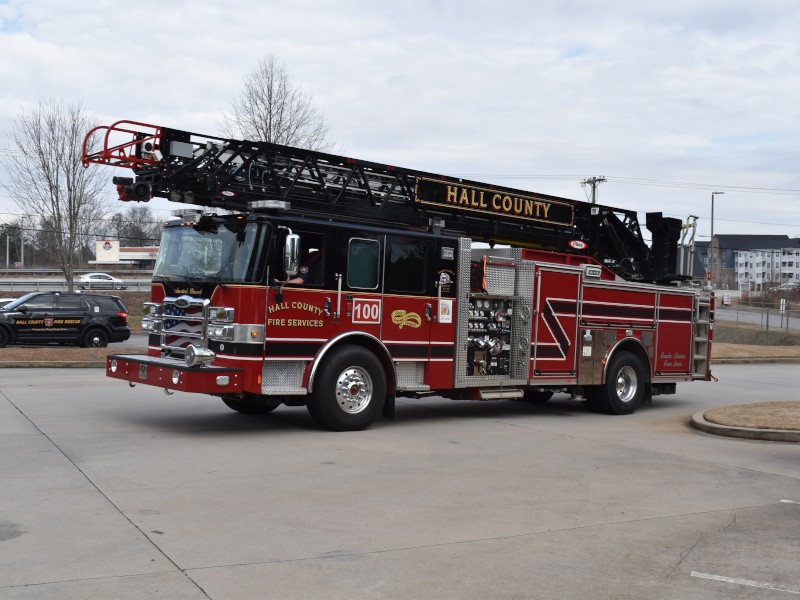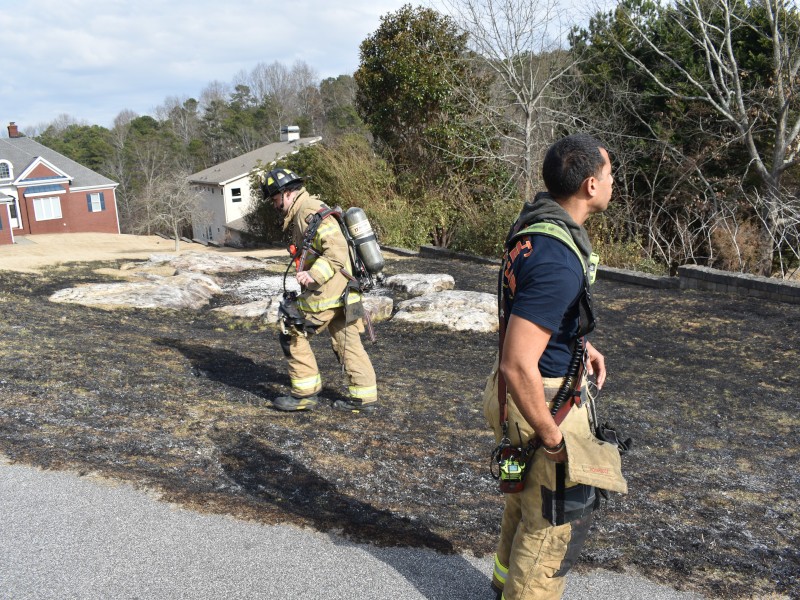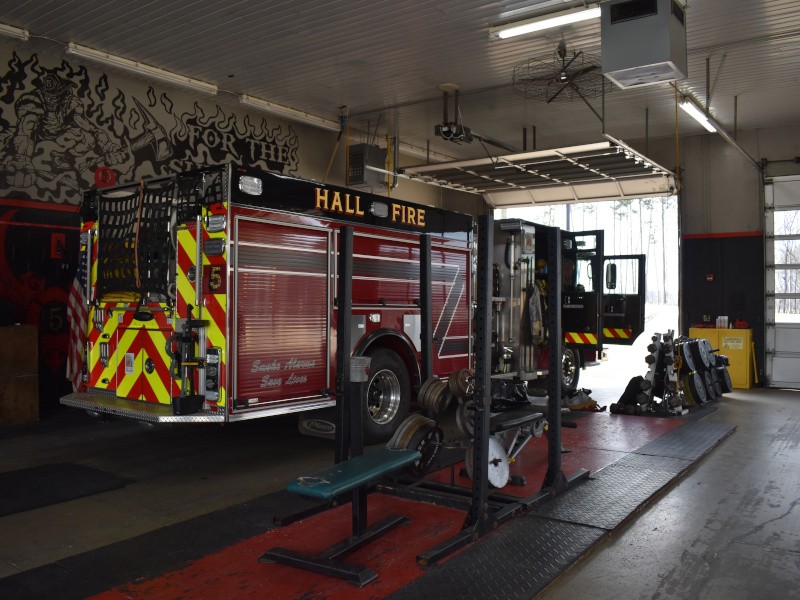This is the second in a two-part series looking at the role firefighters play in the Hall County community.
Hall County Fire Rescue Station 5 Chief Rod Wilson stands before a class of firefighters, most of whom have been with the department for years. They listen intently, some scribbling notes, others raising a hand every now and then to ask questions. They are reviewing radio communications — what to say and when to say it when the chips are down and emergency action is required.
They are all participating in a voluntary class known as the Blue Card Training Program. Active emergency and fire scenes require several important skills: speedy physical reactions and effective communication. Along with that, responders need leaders who can direct intense situations.
As 30-year veteran Chief Wilson puts it, most people are calling fire rescue in a time of need to help control the chaos, not add to it. Firefighters in the class nod in agreement.
Blue Card is a program that provides fire departments with a training and certification system that clearly defines the best practices for everyday strategic and tactical emergency situations. It trains participants to be Incident Commanders that are able to make the best possible decisions that aim to eliminate costly mistakes. It also provides the opportunity for firefighters to fill in for those higher in the chain of command when needed.
Along with Chief Wilson, HCFR Public Information Officer Kimberlie Ledsinger accompanied AccessWDUN on a ride-along with the fire department, seeing first-hand how the men and women of the department train, recruit and respond to incidents.
“Our county is separated into three different battalions,” Ledsinger said. “And we have about five stations in each battalion, 16 total. Battalion one is our central battalion that is in the center of Hall County, including Gainesville. And then battalion two is the south end of our county. And that's where a lot of our busy stations are. And then battalion three is the north end.”
Officials said typically the southern stations receive the most call volume due to the increasing density of residential and commercial areas in South Hall.
Battalions and stations are comprised of many different roles and ranks.
“Once they [responders] start on shift, they are firefighters and EMT certified,” Ledsinger said. “Moving up, they can go to a Fire Apparatus Operator, which is our FAOs, they drive the trucks and the engines. And then Captain, and above that is a Lieutenant, so they're the officer on each apparatus. They're normally in the passenger seat, and they have more responsibility.”
Many of the operators on fire trucks have more than one job. For instance, the FAO is also the one responsible for securing the connection between a firehose and a hydrant once on-scene.
“And then above that, we have our Battalion Chiefs, there are three Battalion Chiefs per shift,” Ledsinger said. “So that's nine Battalion Chiefs total.”
There are three shifts at the fire department that operate on a rotating 24-hour basis. However, that slightly changes once you get into the administrative ranks.
“Then we also have our administrative chiefs,” Ledsinger said. “They work Monday through Friday, but they're kind of on the clock all the time as well, monitoring operations. So we have division chiefs, including our Operations Chief, EMS Division Chief, Chief of Training, Chief of Support Services, Chief of Special Operations, and we also have our Assistant Chief. And then above that would be our Deputy Chief and then our Fire Chief, who's at the top.”
The current Hall County Fire Chief is Chris Armstrong.
Training and recruitment are major parts of firefighter operations, and it all starts with the 16-week recruit camp before they start on traditional shifts.
“Fire training is 16 weeks when you become a recruit,” Ledsinger said. “We go over hazmat skills, obviously they learn how to catch a hydrant and use different hose lines for different scenes. They learn how to search for victims, they learn how to pull victims from hypothetical burning buildings. They learn different fire tech skills. If a scenario has a fire in the basement, they learn how to handle that, which is different from handling it if it were in the attic. If it was in the attic, they would utilize their ventilation skills, which they learn how to use all of our fire equipment, including saws and our cutters.”
Blue Card training isn’t the only place firefighters learn to hone their communication skills. Radio and on-scene communication strategies are a major part of that 16-week training.
“All of the communications on a fire scene or even on a medical call, because you're staying in communications with the dispatcher at all times,” Ledsinger said. “So they know who to send, how many units to send, they know whether or not the scene is escalating. All that communication is very important. It's clear and concise, and it keeps the scene flowing and organized.”
The recruitment training period can be condensed if a recruit comes with certifications already earned. Ledsinger also noted that Hall County Fire Rescue is currently hiring.
“After applications, you go through a long interview with a panel of people and you're able to dive into that person's personality and what their interests are, if they like hands-on work — because that's what this is,” Ledsinger said. “You're constantly moving.”
Beyond ranks, recruitment and emergency response, the department in Hall County conducts several community risk reduction programs. During the summer months, their marine rescue team does water safety education. The fire rescue also hosts programs in schools educating people on safety precautions at home, the importance of fire alarms and how to use fire extinguishers.
Chief Wilson affirmed that one of the best ways to retain responders and have a beneficial impact on the community is by fostering a positive station culture. He and the other chiefs spread around Hall County strive to consistently stay in touch with their firefighters and the community and keep up-to-date on the latest training programs.
To view part one of this two-part series, click here.












